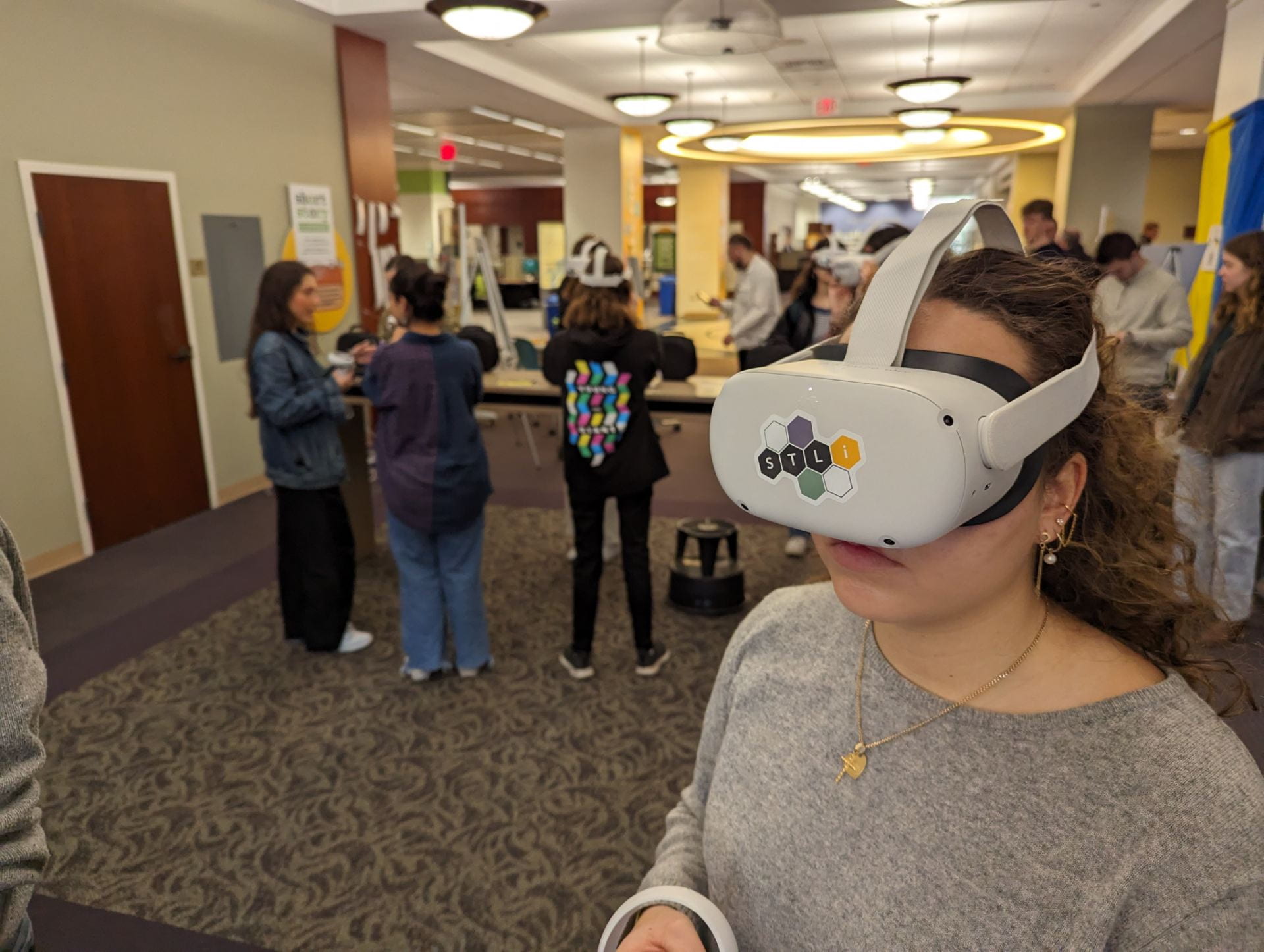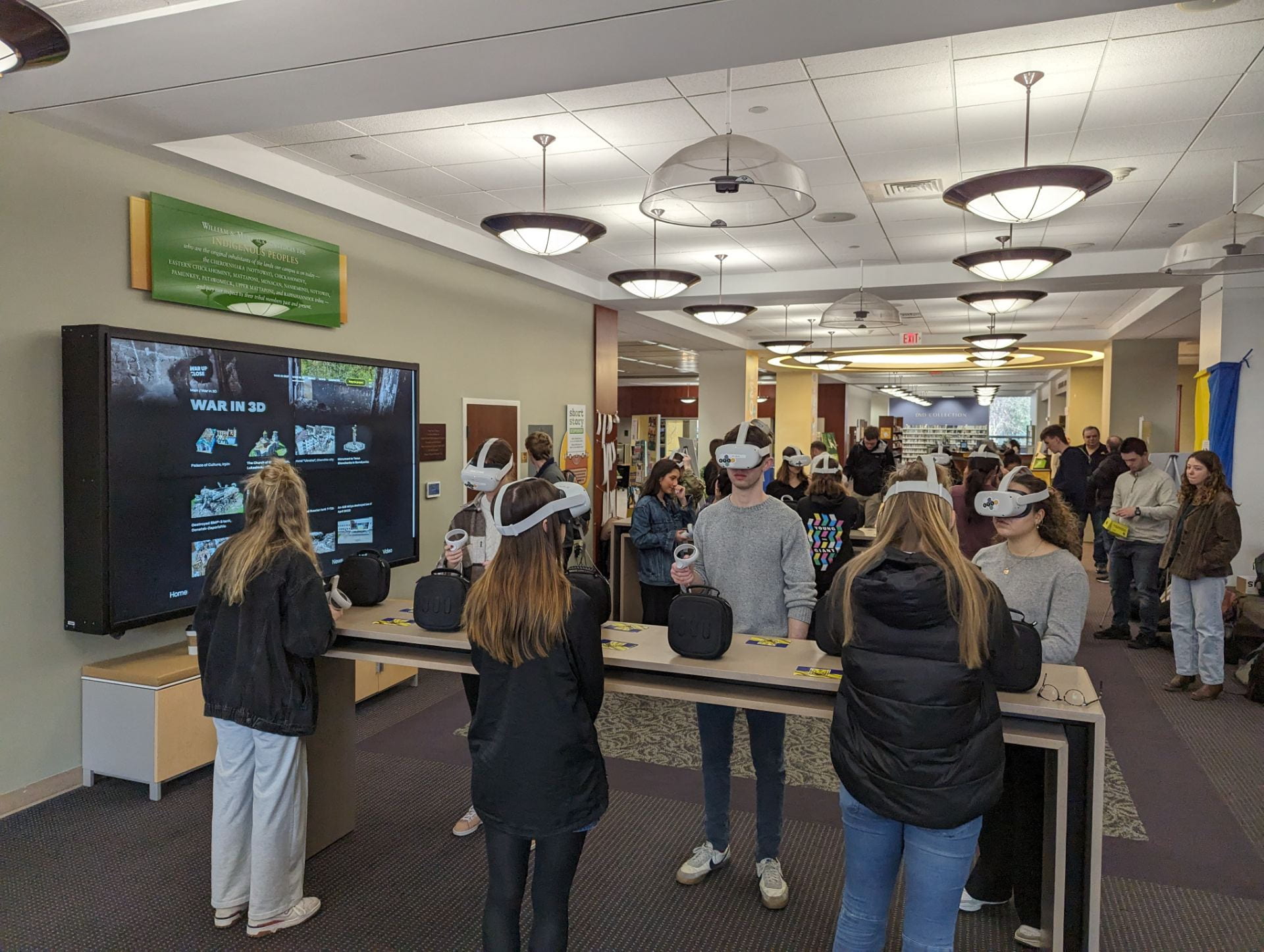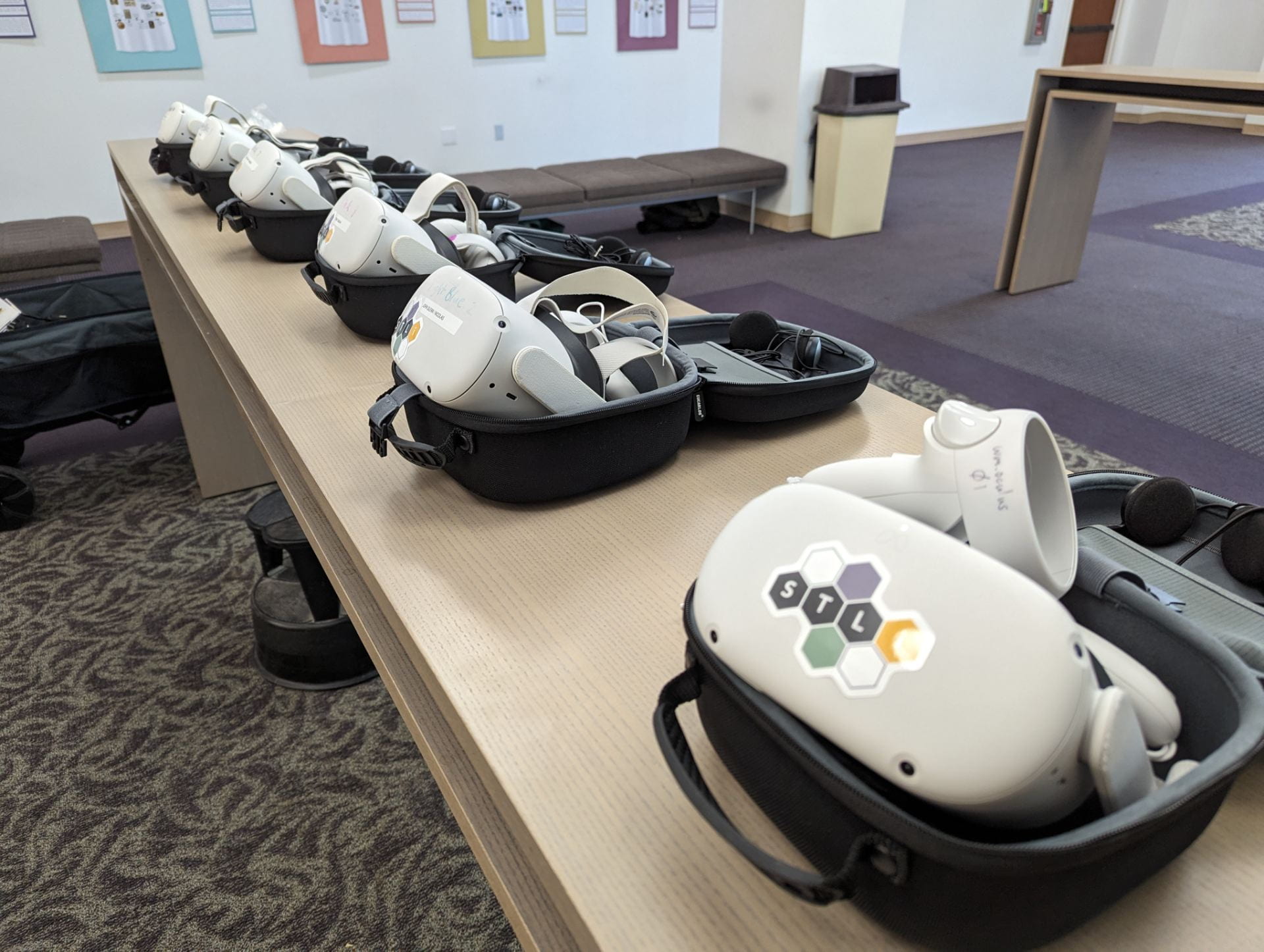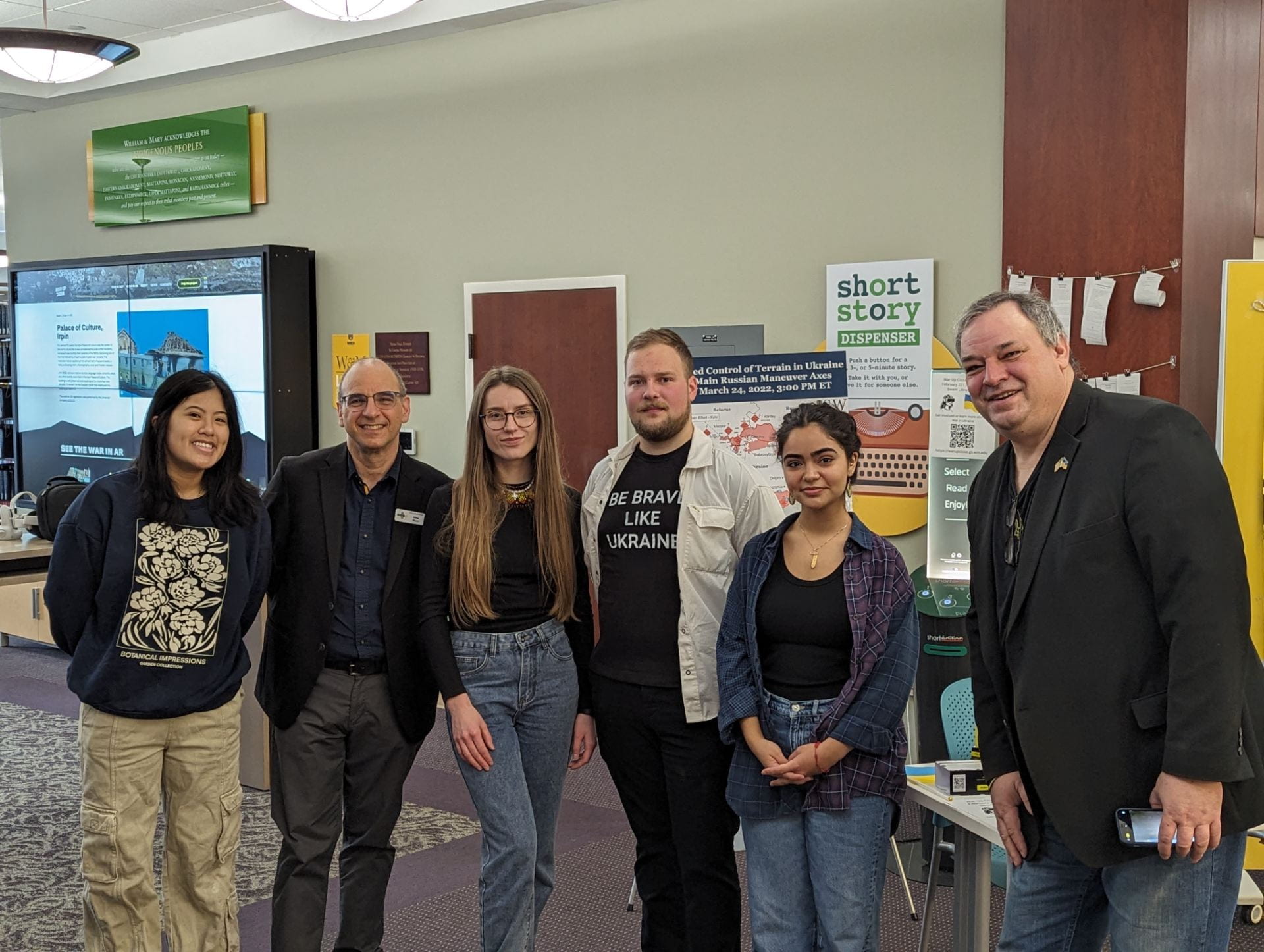VR experience: Walking through war-torn Ukraine with STLI
March 8, 2024 • Vivian Hoang




On Thursday, Feb. 22, students and faculty alike were given the opportunity to step into and fully immerse themselves in the decimated landscape of northern Ukraine. From 11 a.m. to 3 p.m., Swem Library’s first-floor lobby featured a digital exhibit from the VR Museum of War in Ukraine in which attendees used VR goggles provided by the Studio for Teaching and Learning Innovation to virtually visit 18 regions of Ukraine through 360° panoramic photos, drone footage, and 3D models of impacted buildings and landmarks.
You actually get into the situation, you can see with your own eyes, basically, instead of just seeing a printed picture or just a photo on the web, you can actually have the sound, you can have the 360 experience.
The event comes as an extended collaboration between STLI, Swem Library, the War Up Close Project, and the Department of Russian, East European, & Eurasian Studies to recognize two years since Russia’s full-scale invasion of Ukraine.
According to Nazar Syvak, a Ukrainian volunteer with the War Up Close Project who has brought this exhibit to seven different countries, the intention of the museum is to create permanent digital records of the destruction of Ukrainian communities so that Russia can be held accountable for their crimes, and Ukraine’s genocide does not fade from historical memory. Syvak even brought with him physical relics from the war, including a shell that landed 200 yards from his house in Ukraine, to hammer home this point.
“We use technologies that were used by Google Street View, so we have those carts riding around, employing the 3D VR technology to make sure that all the destructions are preserved so that people don’t forget,” Syvak said.
The connections between Syvak and STLI were first facilitated by Nathan Colvin, a Ph.D candidate at Old Dominion University and new hire in William and Mary’s Department of Government. Colvin, who had previously experienced the VR Museum of War in Ukraine when the War Up Close Project visited ODU, brought members of STLI and Russian, East European, & Eurasian Studies to show them the project and its impact at ODU.
Now coming full circle, Colvin was able to bring his GOVT 329 International Security class down to Swem to try out the exhibit during instructional hours.
“Beyond theory [I wanted to talk] about the linkage between national security and human security,” Colvin said. “And so this visualizes human tolls so better than just reading about it.”
Syvak echoed the importance of full-body immersion that technologies like VR are able to bring to those who have likely never witnessed the atrocities of war up close beyond a news headline and may even be desensitized to such violence by its frequent mention.
“You actually get into the situation, you can see with your own eyes, basically, instead of just seeing a printed picture or just a photo on the web, you can actually have the sound, you can have the 360 experience,” Syvak said. “…You just don’t see houses that are burnt out. You actually see that somebody lived in that house. They were children playing around with parents going to work. But then Russia came and basically destroyed, annihilated that way of living completely.”
Additionally, at a time when entry into Ukraine is exceedingly difficult and dangerous, Syvak says VR technology provides a safe and accessible experience that is still similarly impactful to a firsthand visit.
“It’s the closest you can get besides actually visiting the place,” Syvak said. “And it’s easy to bring in. We just need the VR technology, the VR headset.”
Russian Studies Program Director Sasha Prokhorov also highlighted the crucial platform that these digital technologies provide to marginalized groups like Ukrainians to share their lived experiences.
“I think it’s important that this is a VR exhibit created by a Ukrainian NGO, so it gives voice and vision to Ukrainian people to talk and to bring us their stories,” Prokhorov said. “And it obviously gives an unprecedented sense of immediacy as far as seeing the specific sites where the war has happened and the areas which Ukraine liberated from Russian occupation.”
Prokhorov further emphasized the “unique moment” that the VR technology provides for participants to have agency to embark on their own self-guided journeys throughout the simulated landscape of Ukraine.
“It also allows each person to take their own path, through this virtual archiving museum so that it’s not the same for everyone,” Prokhorov said. “So everyone, by traveling in this virtual space, is creating their own stories.”
Syvak, a student himself, ultimately sees the intersection of VR technology and higher education as the path forward. He expressed gratitude to STLI and its institutional partners for providing such a crucial space where dozens could see and experience the virtual museum exhibit.
“I do believe that students are the future and the intellectual elite in the way of society,” Syvak said. “…People are super responsive in universities. We’ve seen the best feedback, people show up the most in the universities. Super easy to organize, the professors are awesome, like William and Mary’s faculty was great. They helped a lot. They made the experience super easy, so we appreciate that they let us in to present here.”
By fostering these types of interdisciplinary collaborations and creatively adapting innovative technologies for academic use, STLI is able to provide students with a uniquely engaging experience that supplements course content with real-world application and first-person immersion.